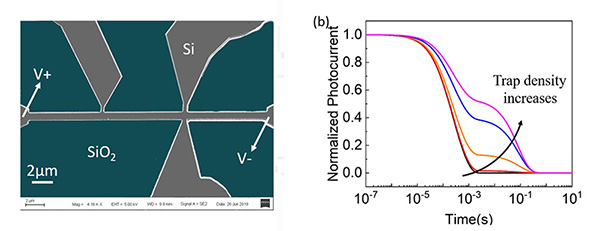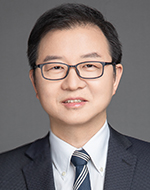The University of Michigan-Shanghai Jiao Tong University Joint Institute (UM-SJTU JI, JI hereafter) Professor Yaping Dan has published a new article “Analytical Transient Responses and Gain-Bandwidth-Products of Low-Dimensional High Gain Photodetectors”(weblink)in ACS Nano, a top journal in nano science.

The research article reveals the mechanism of the transient response of high gain photoconductors, based on which the team further derived explicit transient equations which can fit well with the experimental data and predicted the limit of the Gain-Bandwidth product for low-dimensional photoconductors. Professor Yaping Dan is the corresponding author, JI postdoc Jiajing He is the first author. Assistant Professor Rui Yang, Adjunct professor Abdelmadjid Mesli, Ph.D student Huayou Liu, Yueyang Jia and Kai Li from the joint institute, Professor Yongning He and her student Chulin Huang from Xi’an Jiao Tong University also participated this research work.
Photoconductors is one of the simplest devices consisting of a resistor in contact with two metal electrodes at the terminals. It was observed in experiments that photoconductors often have extraordinarily high photo gains. The gain sometimes is as high as 1 billion, which means 1 billion electrons can be generated for every photon that the semiconductor absorbs.
In 1956, R. L. Petritz derived a gain theory for the gain mechanism (written in the classical textbooks on semiconductor physics and devices), stating that a photoconductor will intrinsically have an extraordinarily high gain as long as the minority carrier lifetime is long and the carrier transit time is short enough by making the device short. However, the minority carrier lifetime is difficult to calibrate, in particular for low dimensional semiconductors. Therefore, the classical gain theory is inexplicit since it cannot fit with experimental data in which the photo gain is often plotted as a function of light intensity and device physical parameters. In 1980s, Japanese scientist Nozomu Matsuo and coworkers managed to calibrate the minority carrier lifetime in GaAs thin films, finding that the gain predicted by the classical theory was smaller than the values measured in experiments by 3-4 orders of magnitude. In the following decades, other scientists also found that the classical theory was problematic. But no one ever pointed out what was wrong with the classical theory and what would be the correct theory. This theory was widely documented in the semiconductor text book and employed for qualitatively explaining the high gain often observed in low dimensional photoconductors(Nature Nanotech.7, 2012, 363;Nature Nanotech.9, 2014, 273).
In 2018, Professor Dan and his team published two research articles in ACS Photonics (5, 2018, 4111–4116) and ACS Nano (12, 2018, 3436-3441), pointing out that the classical gain theory was derived on two displaced assumptions. The first assumption is uniform distribution of excess electrons and holes in photoconductors which is invalid due to the confinement of metal-semiconductor boundary. The second assumption is that the number of photogenerated electrons and holes contributing photoconductivity are equal, which is only true in “ideal” semiconductors. In real semiconductors, there are always defects and potential wells that will localize excess minority carriers, resulting in the inequality of excess electrons and holes in the conduction channel. Professor Dan and his team found that photogain of the photoconductors originates from the widening of the conducting channel thanks to the accumulation of photogenerated majority carriers in the conduction channel. A high-gain photoconductor can be modeled as a resistor modulated by floating Schottky junctions. Base on this, the team further derived the explicit gain equations which can fit well with the experimental results. These gain equations can predict the performance and guide the design of high-performance photoconductors (ACS Nano 14, 2020, 3405-3413). The theory was further extended to graphene-QDs photoconductors, which can predict the positive or negative photoresponse guided via gate voltage (Small 17, 2021, 2006307).
In this publication, Professor Dan and his team focused on establishing the analytical transient response and gain-bandwidth product, which allows for designing the frequency responses of low-dimensional photodetectors.
Personal Profile

Yaping Dan is currently a tenured associate professor at the UM-SJTU Joint Institute. He received his Bachelor’s degree from Xi’an Jiao Tong University in 1999, Master’s degree from Tsinghua University in 2002, and Ph.D. degree from the University of Pennsylvania in 2008. He conducted his postdoctoral research at Harvard University from 2008 to 2012 before joining the joint institute in 2012. His research interests focus on fully integrated all-silicon photonics and single atom electronics, aiming to provide key technological solutions to advanced integrated circuits and quantum computing.





